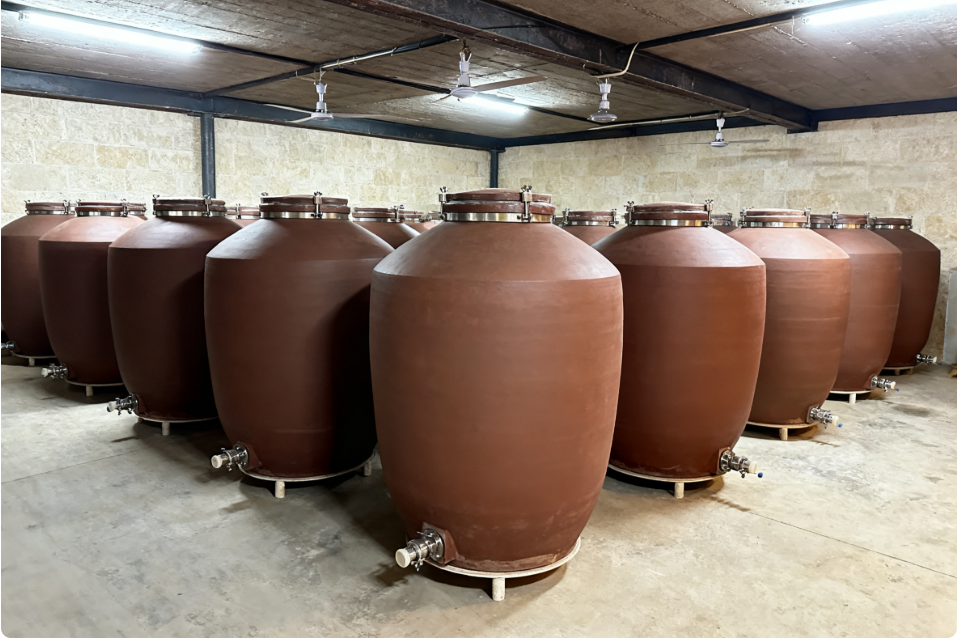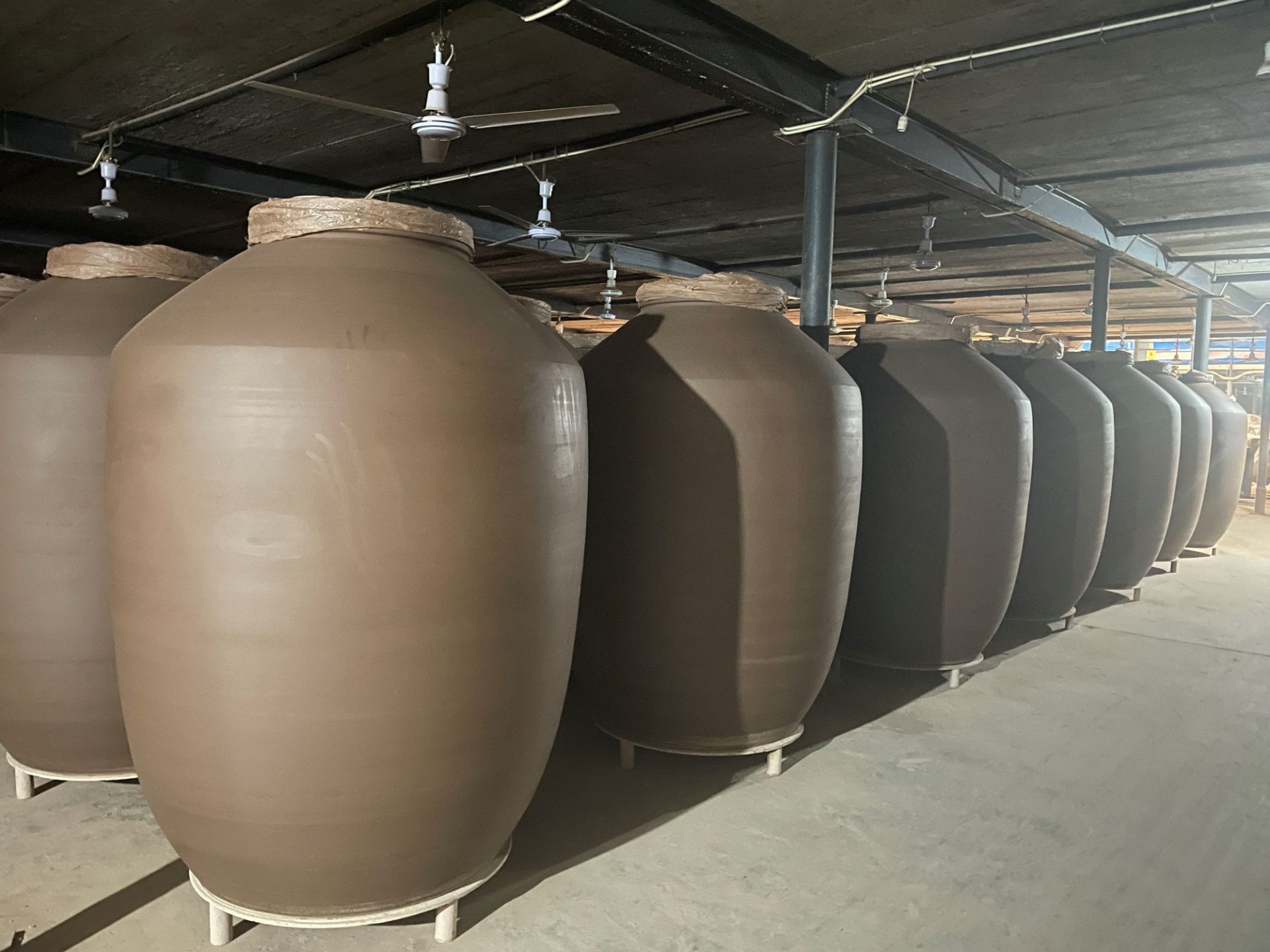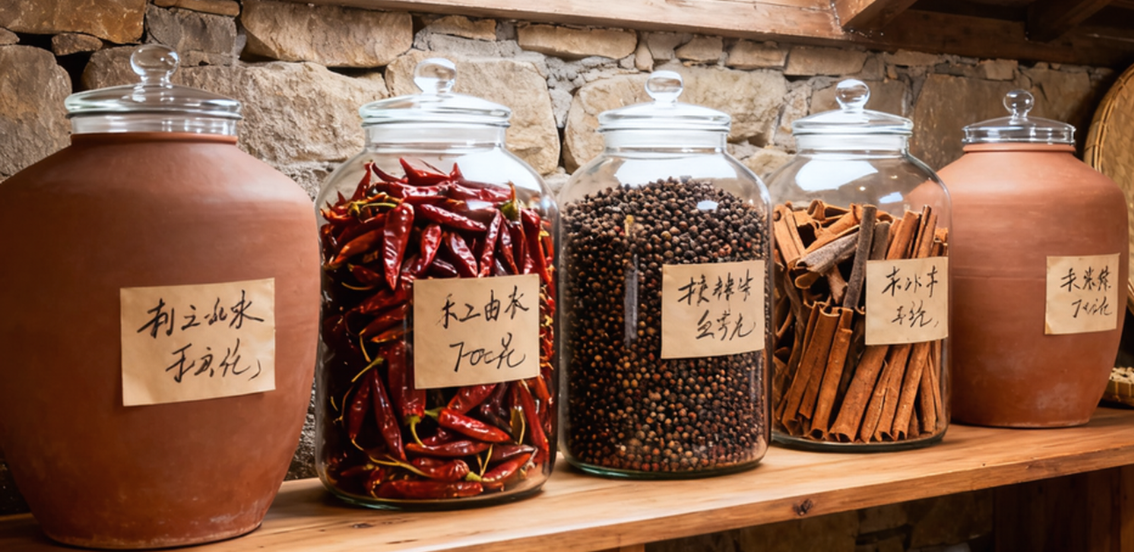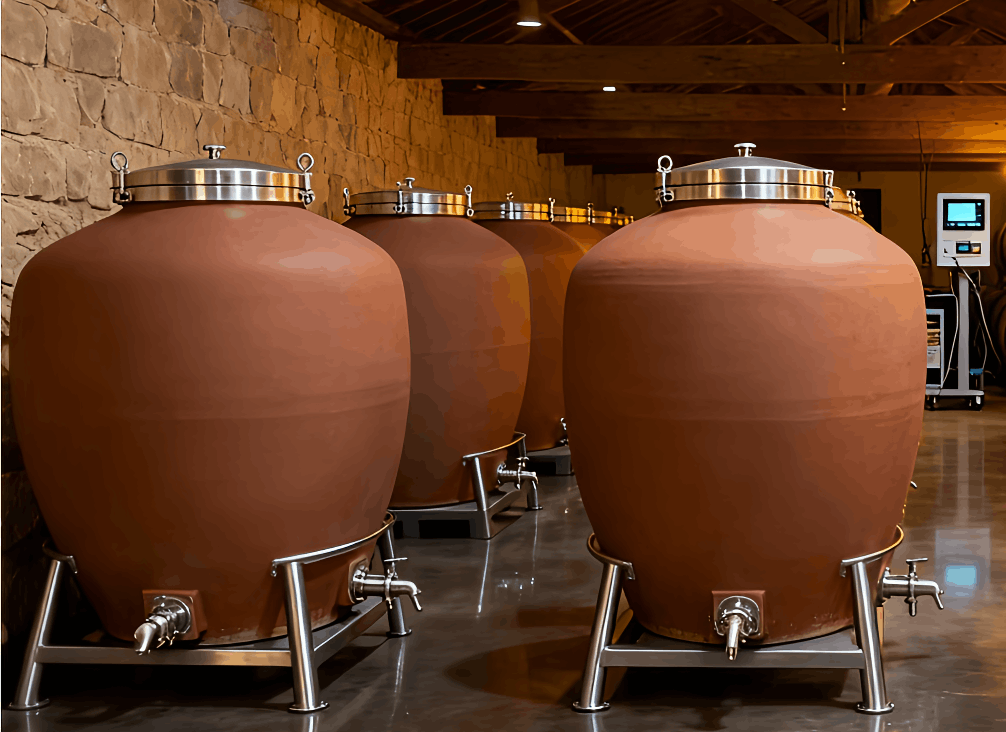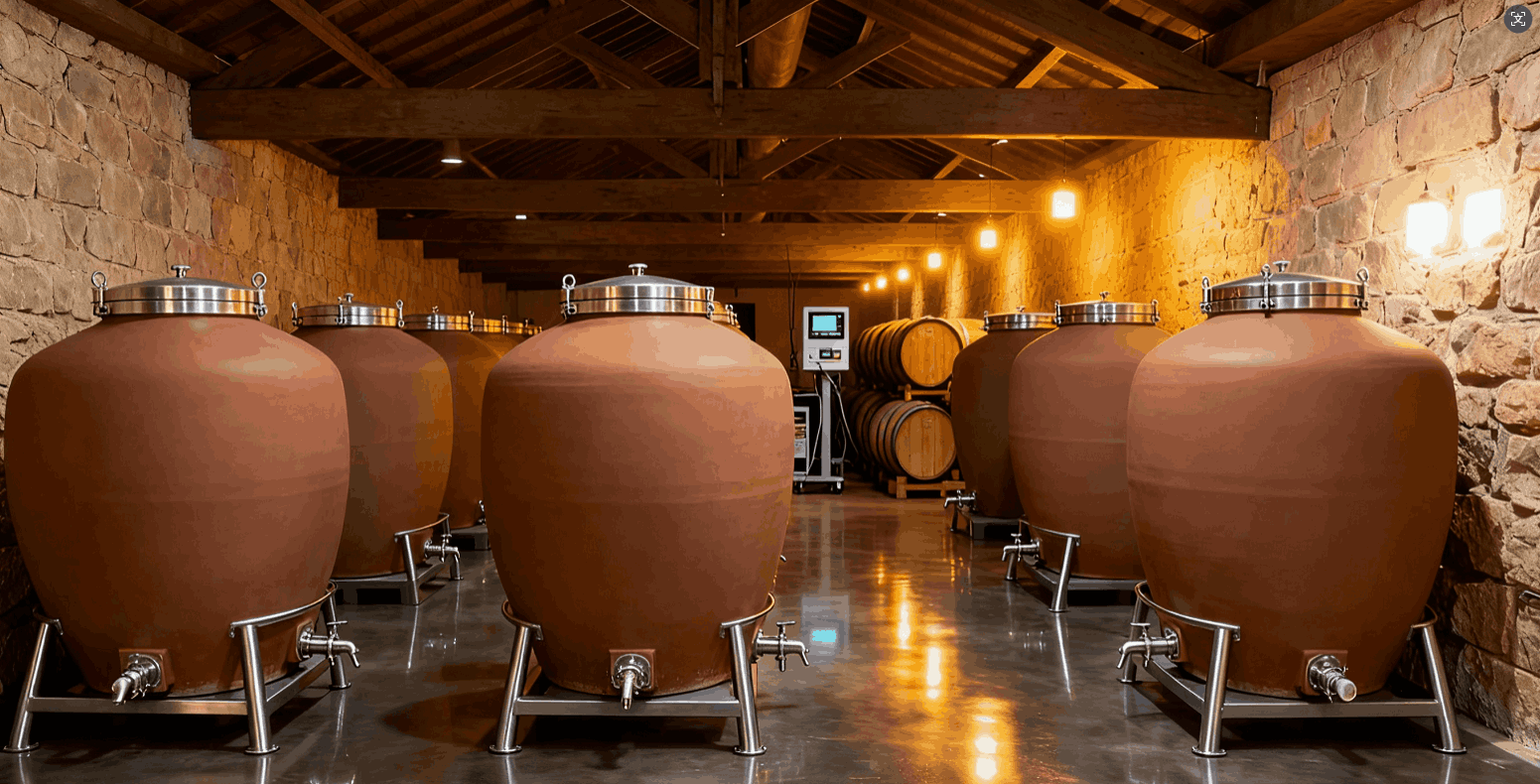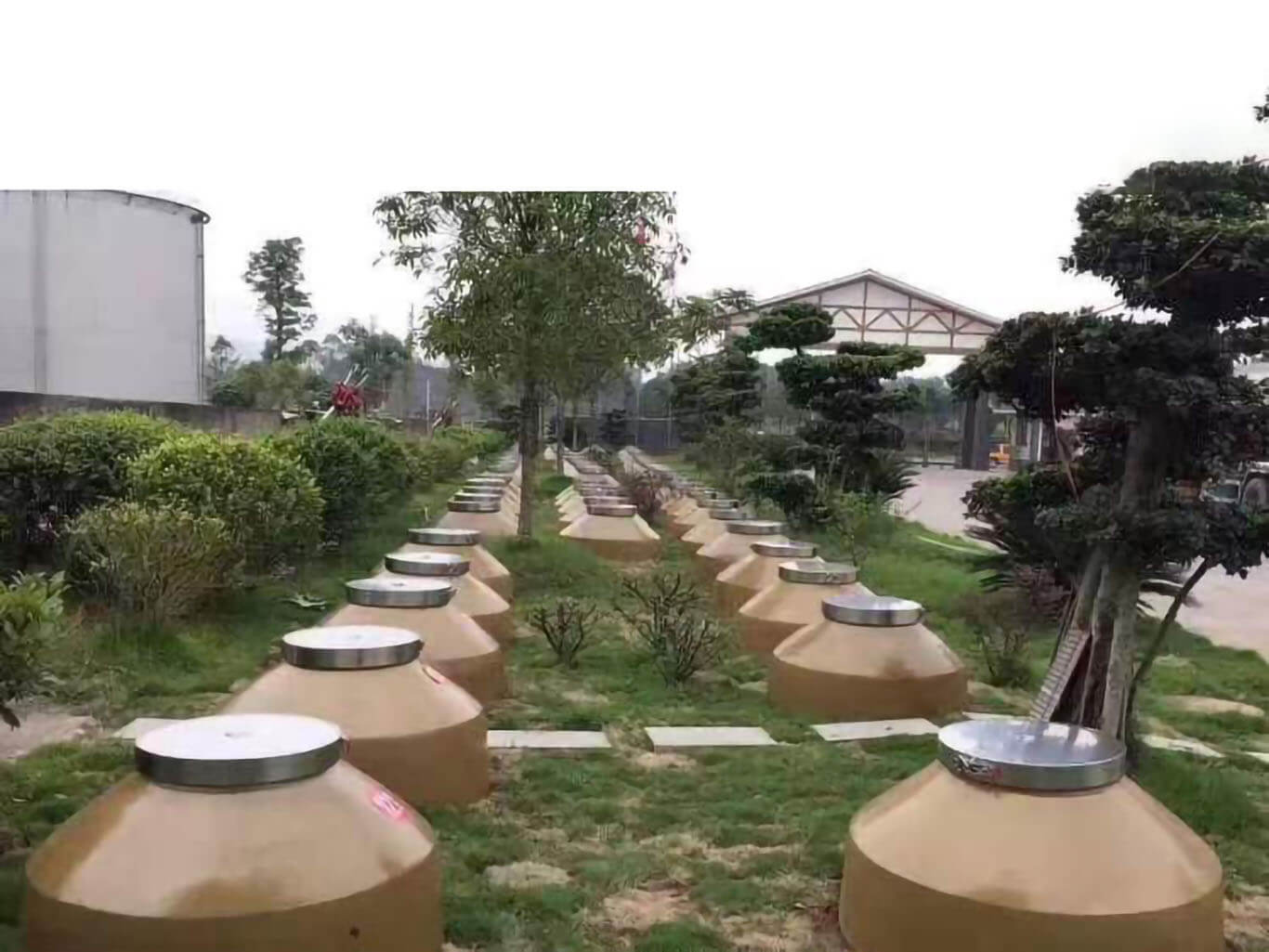What Are Terracotta Amphora Used For?
The terracotta amphora is mainly used for brewing and aging wine. The raw material for making the amphora is natural terracotta clay, which has significant characteristics of porosity and breathability.
In this article, we will explore some common uses of clay amphora in fermentation and alcohol brewing.
What Is a Terracotta Amphora?
Terracotta amphorae are fermentation vessels made from natural clay fired at high temperatures.
Their porous, breathable nature makes them ideal for storing liquids.
You’ll also find that they offer thermal insulation and temperature stability, enabling them to maintain a relatively constant temperature for the wine, making it less susceptible to short-term temperature fluctuations.
By being buried in the earth, traditional vessels like amphorae and qvevri harness the ground’s constant temperature. This method creates a naturally stable and cool environment that safeguards the fermentation and aging process.
Terracotta Amphora of Main Uses
Across ancient Greece and Rome, the amphora was a vital workhorse. Its two-handled design allowed for easy transport, and its tapered base enabled secure storage in sand or aboard ships.
1. Liquid transportation and storage
In ancient times, amphorae were mainly used to store wine, olive oil, and some fish sauces.
2. Dry goods transportation and storage
Amphorae had significant practical value in storing grains, dried fruits, honey and spices.
3. Wine Fermentation Crocks
Modern winemakers are rediscovering the value of the amphora, primarily leveraging their porous, breathable, and slightly oxygenated properties to create unique wine styles.
For professional winemakers, using amphora wine making offers a purer flavor and a more balanced body.
Amphorae are commonly used for white, orange, and red wines and are ideal fermentation vessels.
4. Wine Aging Vessels
Unlike oak barrels, the most popular wine jars today are egg-shaped, cylindrical, and spherical, designed to produce a rounded, smooth wine. These amphora clay shapes are a favorite among professional winemakers.
As a professional amphorae manufacturer in China, we offer custom amphora wine making services in various shapes, guaranteeing quality.
The core principle of amphora wine making is to slowly oxidize the wine, allowing it to develop complex aromas such as nuts, dried fruits, and honey, preserving the freshness of the fruit, something oak barrels cannot achieve.
5. Cider Fermentation and Aging
Beyond the fermentation and aging of wine, it’s also well-suited for natural cider production.
Professional natural cider makers often use amphorae to develop a more complex flavor profile.
6. Beer Brewing
Some craft breweries are beginning to experiment with using clay pots to ferment or age specific styles of beer (such as Flemish Red Ale and Saison) to achieve unique acidity and complexity.
7. Other Modern Uses of Amphora:
As Decorative Objects: Replicas of ancient styles, amphora are often used as decorative elements in gardens, hotels, and villas, creating a Mediterranean or classical aesthetic.
As Diningware: In some high-end restaurants or themed parties, they are used as containers for chilling wine or for display.
FAQS
1: As a Professional Winemaker, How Should You Choose Between Oak Barrels And Alembic?
Choose based on the style of wine you’re aiming for:
Choose terracotta amphora:
If you’re looking to create a wine that perfectly expresses the grape variety and terroir, with a more vibrant style, oxidative notes, and complex textures, then an amphora is the ideal fermentation medium.
Choose oak barrels:
If you’re looking for classic vanilla and spice flavors in your wine and require faster oxidation and integration, then oak barrels are the perfect choice.
2. How Are Wine Jars Made?
Wine jars are made from natural clay, which undergoes a series of manufacturing processes: mud-making, calendering, hand-pulling, air-drying, oven-drying, firing, and testing.
They are typically formed in modern tunnel kilns at high temperatures (above 1200°C). Their main characteristics are durability, porosity, and breathability.
3. What’s Special About Amphora Wine Making?
Wine brewed or aged in amphora typically has more complex aromas, a richer texture, softer tannins, and a more vibrant and pure flavor.
4. Are Terracotta Amphora Only Used for Wine?
Amphorae aren’t just for winemaking. Professional winemakers also use them to make beer, cider, and sake.
5. How Can You Tell If a Wine is Aged In an Amphora?
While we can’t be 100% certain, we can use the wine label and tasting cues to identify it:
Wine label information: Look for terms like “Amphora,” “Tinaja,” “Qvevri,” “Anfora,” and “Clay Age.” Winemakers’ tasting notes often mention this as well.
Tasting cues: We can identify the type of vessel a wine was aged in by its aroma and taste.
Amphora wines are often very full-bodied and unctuous, with silky but noticeable tannins.
Conclusion
The return of the amphora offers winemakers a wider range of winemaking tools. Furthermore, the physical properties of clay, combined with the use of amphora winemaking, ensure a purer, more rounded wine that reflects the terroir.
In the winemaking community, modern amphora are gaining increasing attention and popularity. It is predicted that in the near future, amphora winemaking will gradually gain more market share, and the wines produced will become increasingly sought after by wine enthusiasts.
Contact Us to Learn More About Amphora
Hexin is a professional terracotta amphora manufacturer in China. Our team is dedicated to providing you with attentive service and creating unique fermentation vessels for your amphora project.

